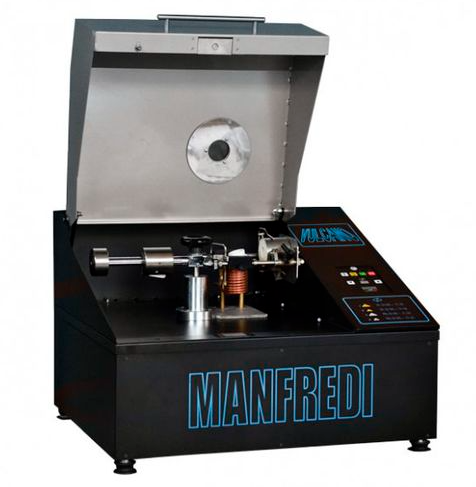
news
2023.5.23
Metal casting is a fundamental manufacturing process that has been used for centuries to create a wide range of components and products. Over time, technological advancements have revolutionized this field, leading to the development of induction casting machines. These machines utilize the principles of electromagnetic induction to heat and melt metals, offering numerous benefits and applications in various industries. This article explores induction casting machines, their operation, advantages, and their impact on modern metal casting processes.

Material Preparation
The metal to be cast is prepared in the form of solid ingots or granules, ensuring it is suitable for induction melting. The material is often preheated to reduce melting time and energy consumption.
Crucible Loading
The prepared metal is loaded into a crucible, which is made of a refractory material capable of withstanding high temperatures. The crucible is placed within the inductor coil of the induction casting machine.
Induction Heating
The high-frequency alternating current is supplied to the inductor coil, creating a powerful magnetic field. This magnetic field induces eddy currents within the metal crucible, resulting in rapid and efficient heating of the metal.
Melting and Casting
As the metal reaches its melting point, it transforms into a molten state within the crucible. Once the desired temperature is achieved, the molten metal can be poured or injected into the mold or casting cavity to create the desired component.
Rapid and Efficient Heating
Induction casting machines provide fast and efficient heating, significantly reducing melting times compared to conventional furnaces. This results in higher productivity and reduced energy consumption.
Precise Temperature Control
Induction casting machines offer precise temperature control, allowing for accurate and consistent melting of metals. This control enhances the quality of the castings and minimizes material waste.
Clean and Contamination-Free Process
Induction melting occurs within a closed crucible, reducing the exposure of the molten metal to the atmosphere. This minimizes the risk of contamination from gases, impurities, or oxidation, resulting in cleaner and higher-quality castings.
Versatility and Flexibility
Induction casting machines are versatile and can accommodate a wide range of metals, including steel, aluminum, copper, and various alloys. They can handle different casting sizes and shapes, making them suitable for diverse casting applications.
Improved Safety
The closed and controlled nature of induction casting machines enhances operator safety by reducing the risk of exposure to high temperatures, fumes, and molten metal splatter.
Automotive
Induction casting machines are used to produce automotive components such as engine blocks, transmission parts, and suspension components. The rapid heating and precise temperature control enable the production of high-quality castings with complex geometries.
Aerospace
The aerospace industry benefits from induction casting machines for manufacturing critical components like turbine blades, engine casings, and structural parts. The clean and contamination-free process ensures the integrity and reliability of these components in demanding aerospace applications.
Jewelry and Artistic Metalwork
Induction casting machines are utilized in the jewelry industry to create intricate and customized pieces. The precise temperature control and clean process enable the production of high-quality jewelry with fine details and minimal material wastage.
Medical Devices
Induction casting machines are employed in the production of medical devices such as implants, surgical instruments, and prosthetics. The ability to melt and cast a wide range of biocompatible materials ensures the manufacture of safe and reliable medical components.
Energy and Power Generation
Induction casting machines are used in the energy sector for producing components like turbine blades, heat exchangers, and electrical connectors. The efficiency and accuracy of induction melting contribute to the performance and reliability of power generation systems.
Process Automation
Increasing automation and integration of induction casting machines with robotic systems allow for improved productivity, reduced labor requirements, and enhanced process control.
Energy Efficiency
Ongoing research focuses on developing more energy-efficient induction casting machines by optimizing power supply systems, reducing heat losses, and enhancing overall system efficiency.
Advanced Materials
Induction casting machines are being adapted to handle emerging materials, such as high-temperature alloys, titanium, and advanced composites, to meet the evolving needs of industries like aerospace and energy.
Integrated Process Monitoring
Advanced sensors and real-time monitoring systems are being integrated into induction casting machines to provide comprehensive data on temperature, melt quality, and process parameters. This enables proactive process control and quality assurance.
